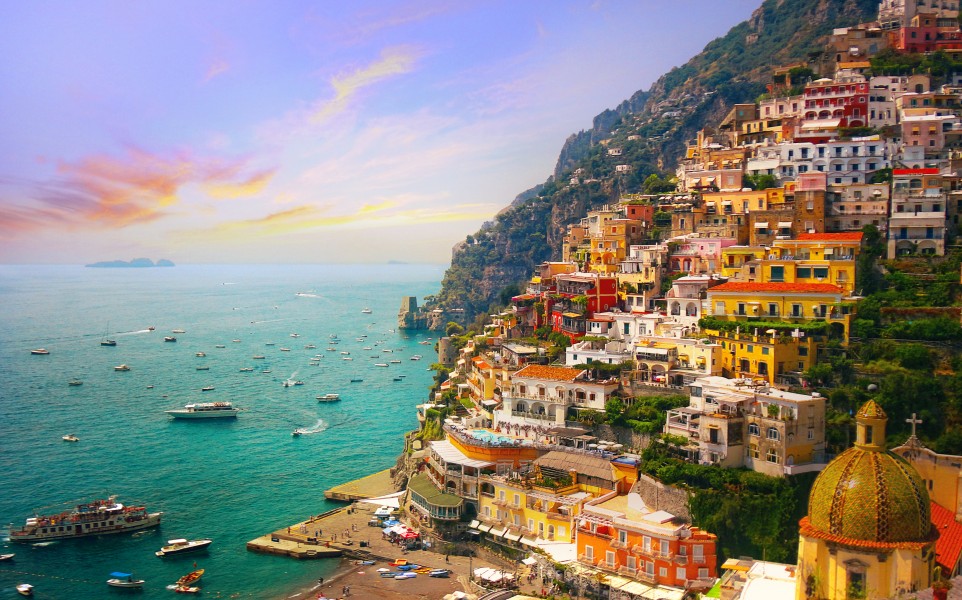I was walking down a side street in Rome near the Spanish Steps when a sign leapt out at me: “Weed Shop.” Be still my Seattleite heart.
At that point I’d been traveling throughout Europe and North Africa for several months, and for all intents and purposes had been abstaining from the green-goodness. Being from a place where it’s sold recreationally with the blessing of the legislature, I’m no longer accustomed or even inclined to search out black-market sources. So when I encountered this apparently legal provider, I jumped on the opportunity.
The owner of the shop, it turned out, was from Los Angeles.
“I’m from Seattle,” I told him. “I didn’t know it was legal in Italy.”
Los Angeles eyed me warily. “It’s not going to be as good as what you’re used to in Seattle.”
Who cares? I thought. Subpar weed is better than no weed at all, so I bought two grams for twenty euros, and went on my way.
Later that night in my hotel room I rolled up a joint and retired to my balcony to unwind. Gazing out over the park of Villa Borghese and the Piazza del Popolo, I fired up and smoked. And smoked. And smoked.
Nothing happened.
As it turns out, the Italian weed laws are something of a joke. By law, it can’t contain more than 0.2% THC, and technically you’re not allowed to smoke or ingest it anyways. Instead, these little baggies and jars of garbage bud are being sold as “collectors’ items.”
So how did Italy get to this cannabis crossroads of nonsense legality? It involves hemp.
In 2016, the country launched a program to revive its once-massive industrial hemp industry, which as you may know can be used to create clothing, rope, fabrics, biofuel, and a wide range of other materials. When new regulations were implemented, however, nothing was said about what could or could not be done with the hemp flowers, which can be cultivated to contain trace amounts of THC. In this regulatory crawlspace, the market for what is called “cannabis light” was born.
Now it’s worth mentioning that these cannabis light strains do tend to have higher levels of CBD, which studies have shown can deliver a range of health benefits. But if you’re visiting Italy and you’re looking for a legal high, you’re out of luck.
Italy does have a thriving medicinal cannabis program. Since it was launched in 2006, the demand has exploded beyond the supply. At this point there is only a single state-licensed medicinal grower (which is run by the army), and the rest is imported from Holland and, more recently, Canada.
With medicinal demand outstripping product availability, and the explosion of jobs and profits created by the cannabis light market (there are no hard numbers, but one grower called Easyjoint
Project claimed to have sold more than 37,000 pounds of flower in a February of 2017 alone), it seems as if Italy would be poised to take steps toward full-on legalization. This is unlikely.
Currently, two political parties rule the country: the Five Star Movement and League. The former is open to legalization, while the latter is against it. These parties will be in power for the next several years, and neither places cannabis high on its list of priorities. So for now, cannabis light might be it.
I wasn’t disheartened by my first experience with this faux-weed. I’d had a few drinks and hadn’t indulged in some time, I reasoned, so maybe my dope-o-meter was off. I figured I’d try again the next day when my cousin arrived in the country, as he possesses a more refined palette for these sorts of things than I.
The following night we packed as much of the sort-of-weed into a joint as we could, then headed to the Spanish Steps. We took a seat overlooking the square, and gave the cannabis light its day in court.
“I think I feel something,” my cousin declared. “Not much but if we smoke a whole bunch of it…It makes me feel kind of mellow.”
This is a result that has been reported by a number of other writers. So if the not-quite-weed is good for anything, maybe it’s good for taking the edge off?
At the very least, it’s highlighting some issues and opportunities within the Italian legal framework. It’s showing that there is a buck to be made and that there are jobs to be created to boost the limping Italian economy. Perhaps that will provide fertile soil for something exciting to bloom in the future.
Credit: www.civilized.life

